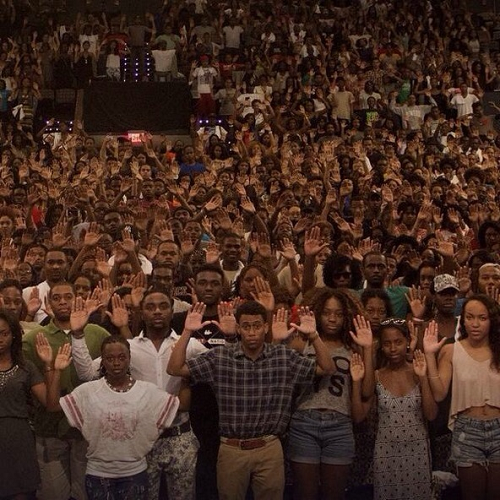Image reflection
I see an amazing visual metaphor for the legacy and current reality of race and citizenship in the United States.
When I posted the image above on facebook a friend posted the image below:
By Joseph Phelan, CSS Fellow
Like many people, I love looking at pictures. I can lose a whole hour of my day scrolling through terrible time wasting websites like BuzzFeed looking at photos of tiny puppies, or images of animals that live in the dark depths of the ocean, or the best of photo bombs. Pictures, and images in general, have the power to draw up so much emotion in me, to stimulate whole stories in my brain, and even draw conclusions based on those stories.
Images of puppies make me go “Awwwww” and feel all warm because of my own individual experience with those little cuddly balls of fur and drool and because growing up in the United States I was exposed to all sorts of stories that reinforced the idea that puppies are things worthy of warm and cute feelings. But it isn’t just nurture, there are plenty of nature reasons I think puppies are cute too - like the biological imperative to protect cute babies, I mean puppies, I mean babies.
So it is a mix. Our narrative brains that are trained in our ever-evolving society with changing norms and practices are also compelled by our evolution, the millennia-long bodily experience of trying to survive as individuals and communities in harsh environments.
But I digress. Back to images, and puppies.
If simple images of puppies can illicit feelings from me, what can images that pull on long entrenched myths and nation building narratives do for me?
This week I saw the image below floating around social media. It was taken at a protest for #JusticeforMikeBrown at a Rams game in St. Louis. What do you see when you look at the image?
This photo is titled the Soiling of Old Glory, and was taken by Stanley Forman in Boston in 1976 when anti-desegregation bussing activists attacked civil rights activists. These images together tell an even deeper story about citizenship and race in the United States spanning supposedly different eras in out society.
Seeing these two images reminds me how important it is to find the right images as we craft justice based narratives that we hope will break through statue quo narratives.
But two images are not enough to create totally new narratives, or myths as J. Francis Davis writes in an article for the Center for Media Literacy:
The key to recognizing the new myths of the image culture is to think of them as ideas that emerge from long exposure to patterns of images-not as myths that can be seen readily in one or two images. In fact, these myths are unconvincing unless one thinks of them as emerging from a huge glut of images, which come from many sources, including advertising, entertainment and news.
This is where the creativity meets the strategy. As a story based strategist I spend a lot of time thinking about what images best advance narratives for campaigns and movements. But this exercise needs to be applied to the real world. I need to be connecting creative narrative campaign practices to real time conditions. This means thinking about how to move and image out and saturate the consciousness of my targeted audiences.
Sometimes, though, it isn’t just up to one organization, a coalition, or an individual. Movement moments often create strong images organically. They become iconic and all encompassing of particular stories expanded to meta narratives. They are inspiring in the story they tell, and the future they call for.



